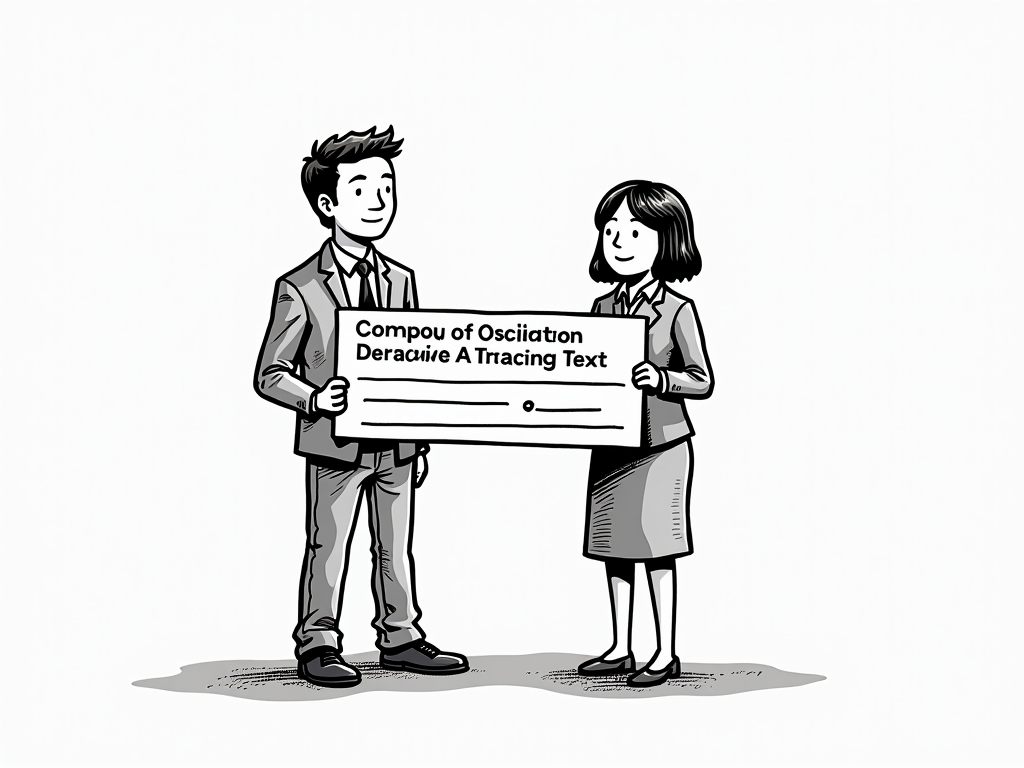
Monthly Bookkeeping in Estonia: A Comprehensive Guide to Essential Record-Keeping
Reading time: 12 minutes
Table of Contents
- Introduction to Estonian Bookkeeping Requirements
- The Legal Framework for Bookkeeping in Estonia
- Essential Monthly Records to Maintain
- Digital Bookkeeping in Estonia’s e-Society
- Document Retention Periods and Compliance
- Common Bookkeeping Challenges and Solutions
- Conclusion
- Frequently Asked Questions
Introduction to Estonian Bookkeeping Requirements
Ever felt lost in the maze of Estonian bookkeeping compliance? You’re not alone. Navigating the meticulous world of financial record-keeping in Estonia can seem daunting, especially for entrepreneurs new to the country’s business landscape. However, understanding what records to maintain monthly isn’t just about satisfying regulatory requirements—it’s about building a foundation for strategic business growth.
Estonia, despite its digital-forward reputation, maintains strict bookkeeping standards that blend traditional accounting principles with innovative e-solutions. This dual approach creates both unique opportunities and distinct challenges for business operators.
In this comprehensive guide, we’ll break down exactly what records Estonian businesses must maintain monthly, how long to keep them, and the most efficient ways to manage this critical business function. Whether you’re running a small OÜ (private limited company) or managing a larger AS (public limited company), these insights will help transform your bookkeeping from a compliance headache into a strategic advantage.
The Legal Framework for Bookkeeping in Estonia
The Estonian Accounting Act
The cornerstone of Estonian bookkeeping requirements is the Accounting Act (Raamatupidamise seadus), which establishes the fundamental principles and requirements for maintaining accounting records. This legislation doesn’t just outline what to record—it prescribes how these records should be maintained and processed.
According to Jaak Kütt, a certified auditor and partner at Grant Thornton Baltic, “The Estonian Accounting Act creates a framework that balances international accounting standards with Estonia’s digital-first approach to governance. It’s designed to ensure transparency while minimizing administrative burden through digital solutions.”
Key provisions of the Accounting Act include:
- Requirements for double-entry bookkeeping for most business entities
- Principles for documenting economic transactions
- Guidelines for preparing financial statements
- Framework for digital document management
- Specific record-keeping requirements by business type and size
The Act underwent significant revision in 2019, further aligning Estonian practices with EU directives while maintaining the country’s distinctive e-governance approach.
Tax Regulations and Their Impact
Tax regulations form the second critical pillar of Estonia’s bookkeeping framework. The Tax and Customs Board (Maksu- ja Tolliamet) requires specific documentation to verify tax compliance, particularly regarding:
- Value-Added Tax (käibemaks) – 20% standard rate
- Corporate Income Tax (tulumaks) – unique distribution-based system
- Social Tax (sotsiaalmaks) – 33% on employment income
- Unemployment Insurance (töötuskindlustusmakse)
- Mandatory Funded Pension (kohustuslik kogumispension)
Estonia’s distinctive corporate taxation system—where profits are taxed only when distributed—creates unique record-keeping requirements. Unlike jurisdictions with traditional corporate tax, Estonian businesses must maintain meticulous records of distributions and expenses to ensure proper tax treatment.
Well, here’s the straight talk: Successful bookkeeping in Estonia isn’t about volume—it’s about precision and proper classification. The tax implications of improperly documented transactions can be significant, particularly when distinguishing between business and non-business expenses.
Essential Monthly Records to Maintain
Sales and Revenue Documentation
Every Estonian business must maintain comprehensive records of all sales transactions. These records serve as the basis for VAT declarations, income recognition, and ultimately, financial reporting.
Essential sales documents include:
- Sales invoices – Must contain specific elements required by Estonian law, including unique sequential numbering
- Cash register receipts – For retail businesses conducting cash transactions
- Credit/debit card payment confirmations – As evidence of electronic payment receipt
- Service contracts and delivery notes – Supporting documentation for service-based businesses
- Export documentation – For businesses selling internationally, including intra-EU supplies
Quick Scenario: Imagine you’re running a small e-commerce company selling Estonian handicrafts internationally. You’ll need to maintain distinct records for domestic sales (subject to 20% VAT), EU sales (subject to reverse-charge mechanism), and non-EU exports (potentially VAT-exempt). Each category requires specific documentation to justify the tax treatment applied.
Expense and Purchase Records
Documenting business expenses is crucial not only for accurate financial reporting but also for justifying tax deductions. The Estonian Tax and Customs Board scrutinizes expense documentation, particularly for items that could potentially serve both business and personal purposes.
Required expense records include:
- Purchase invoices – Must include VAT information where applicable
- Import documentation – For goods purchased from outside the EU
- Travel expense reports – With supporting receipts for business travel
- Entertainment and representation expense documentation – Subject to specific limitations
- Asset purchase documentation – For depreciation calculations
Pro Tip: Estonian tax law permits business entertainment deductions up to specific thresholds (€32 per person for catering), but requires exceptionally detailed documentation, including attendee lists and business purpose descriptions. Maintain these records contemporaneously—reconstructing them during a tax audit is challenging and often unsuccessful.
Payroll and Employment Documents
Proper documentation of employment relationships and compensation is essential for Estonian businesses with employees. These records support tax compliance and provide evidence of proper fulfillment of employer obligations.
Key payroll records include:
- Employment contracts – Required for all employees
- Payroll calculations – Detailing gross salary, tax withholdings, and net payments
- Tax and social insurance remittance records – Documentation of payments to tax authorities
- Working time records – Including overtime documentation
- Vacation and sick leave tracking – Supporting payment calculations
Bank and Financial Records
Bank statements and financial transaction records form the foundation of verifiable accounting. For Estonian businesses, maintaining a clear separation between business and personal finances is particularly important.
Essential banking records include:
- Monthly bank statements – For all business accounts
- Payment orders and confirmations – For significant transactions
- Loan agreements and repayment schedules – For business financing
- Investment documentation – For business investments
- Petty cash records – For businesses handling physical cash
Digital Bookkeeping in Estonia’s e-Society
E-invoicing Requirements
Estonia has been at the forefront of digital transformation, and this extends to invoicing requirements. Since 2019, e-invoicing has been mandatory for business-to-government transactions, though not yet universally required for business-to-business exchanges. However, the trend is clearly moving toward digital documentation.
According to the Ministry of Economic Affairs and Communications, e-invoices now account for over 92% of B2B invoices in Estonia, reflecting both regulatory encouragement and practical efficiency gains.
E-invoices in Estonia must meet specific technical standards:
- Compliance with the Estonian e-Invoice standard (based on European standard EN 16931)
- Proper digital signature when required
- Secure transmission and storage systems
- Machine-readability while maintaining human-readable versions
Recommended Software Solutions
The Estonian market offers several accounting software solutions tailored to local requirements. The most popular options include:
| Software Solution | Best For | E-invoice Capability | Tax Reporting | Pricing (Monthly) |
|---|---|---|---|---|
| Merit Aktiva | Small to medium businesses | Full integration | Automated declarations | €9-€59 |
| Directo | Medium enterprises | Advanced capabilities | Comprehensive reporting | €29-€199 |
| SimplBooks | Micro-enterprises | Basic functionality | Standard reports | €7-€19 |
| Erply | Retail businesses | Full integration | Specialized retail reports | €39-€249 |
| Standard Books | Freelancers/small businesses | Basic functionality | Manual preparation | Free-€19 |
Case Study: Tallinn-based technology startup Digiwise switched from manual bookkeeping to Merit Aktiva in 2021. The company reports saving approximately 15 hours per month on bookkeeping tasks while improving their tax compliance accuracy. “The automated VAT calculations alone justified the investment,” notes Digiwise’s financial manager Mari Tamm. “But the ability to generate compliant e-invoices and link them directly to our accounting system transformed our entire financial workflow.”
Document Retention Periods and Compliance
Estonian law specifies minimum retention periods for various business records:
- Accounting source documents: 7 years from the end of the financial year
- Accounting registers, ledgers, journals: 7 years from the end of the financial year
- Annual reports and supporting documents: 7 years from the end of the financial year
- Business correspondence: 7 years for items with financial implications
- Payroll records: 7 years, but employment contracts and personal data may have different requirements
- Tax documentation: 7 years from the tax payment deadline
However, certain documents may require longer retention periods:
- Documents related to real estate: Often 10 years after property disposal
- Long-term contracts: Duration of the contract plus 7 years
- Documents related to ongoing litigation: Until final resolution plus standard retention period
For digital records, businesses must ensure that:
- Electronic storage systems meet security requirements
- Data remains accessible throughout the retention period
- Backup procedures are in place and functioning
- File formats remain readable as technology evolves
Common Bookkeeping Challenges and Solutions
Estonian businesses frequently encounter several challenges in their bookkeeping processes:
Challenge 1: Distinguishing between business and personal expenses
Estonia’s tax authorities closely scrutinize expenses to ensure they’re genuinely business-related, particularly for small businesses and sole proprietors.
Solution: Maintain separate bank accounts and credit cards exclusively for business use. Document the business purpose for each expense contemporaneously—explanations created during tax audits carry less weight.
Challenge 2: Managing fringe benefits taxation
Estonia imposes specific tax requirements on employee benefits, including company cars, mobile phones, and certain types of events.
Solution: Implement clear policies on personal use of company assets and maintain detailed usage logs. Consider consulting a tax advisor to structure benefit packages efficiently.
Challenge 3: Cross-border transaction documentation
For businesses engaged in international trade, documenting the correct VAT treatment for various transaction types can be complex.
Solution: Create transaction-specific templates that capture all required information for different cross-border scenarios. Verify VAT numbers for EU customers through VIES before applying zero-rating.
Case Study: Fashion retailer Baltika Group implemented a specialized cross-border transaction documentation system after facing challenges with VAT compliance across multiple EU countries. Their system now automatically applies the correct VAT treatment based on customer location, product type, and delivery method, reducing manual verification by 87% and virtually eliminating VAT errors on international sales.
Conclusion
Effective monthly bookkeeping in Estonia requires a systematic approach to documentation that balances regulatory compliance with operational efficiency. The country’s progressive digital infrastructure offers significant opportunities to streamline record-keeping processes, but businesses must still ensure they’re capturing all required information in compliant formats.
By establishing clear bookkeeping protocols that address the specific requirements outlined in this guide, Estonian businesses can not only avoid compliance issues but also gain valuable financial insights. Well-maintained records provide the foundation for strategic decision-making, tax optimization, and sustainable growth.
Remember that bookkeeping shouldn’t be viewed merely as a regulatory burden—it’s an essential business function that, when properly executed, provides the financial clarity needed to thrive in Estonia’s dynamic business environment. Whether you manage your records in-house or partner with an accounting professional, understanding what documentation to maintain is the critical first step toward financial compliance and success.
Frequently Asked Questions
Can I keep my accounting records in a language other than Estonian?
Estonian law permits accounting records to be maintained in languages other than Estonian. However, you must be prepared to provide translations if requested by tax authorities or auditors. For practical purposes, most businesses use Estonian for customer-facing documentation while sometimes maintaining internal records in English or another language. Consider that tax audits will proceed more smoothly if documentation is readily available in Estonian.
Is it mandatory to use accounting software for Estonian business bookkeeping?
While there’s no explicit legal requirement to use specialized accounting software, the practical realities of Estonian compliance make manual bookkeeping nearly impossible for most businesses. The requirements for e-invoicing, electronic tax declarations, and detailed record-keeping create a strong case for appropriate software solutions. Even the smallest businesses typically benefit from at least basic accounting software that understands Estonian tax rules and reporting requirements.
How does Estonia’s distributed taxation system affect monthly bookkeeping requirements?
Estonia’s unique corporate taxation system—where profits are taxed only when distributed rather than when earned—creates specific bookkeeping challenges. You must maintain detailed records distinguishing between business and non-business expenses, as improper classification can trigger unexpected tax liabilities. Additionally, you need systems to track different types of distributions (dividends, fringe benefits, non-business expenses) as each may have different tax implications. This makes contemporaneous documentation of transaction purposes particularly important in the Estonian context.



